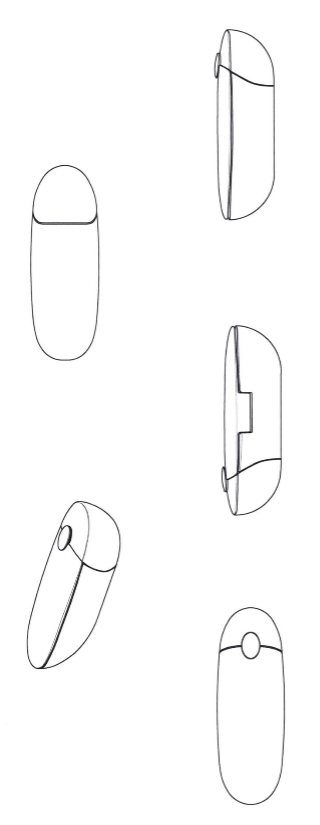Guerlain, the luxury French perfume, cosmetics and skincare house, has emerged victorious in their three year-long attempt to obtain registration of a three-dimensional EU trade mark in respect of the shape of one of their lipsticks (the mark applied for shown below):

Application before the EUIPO and the Board of Appeal
The EUIPO rejected Guerlain’s application on the basis that the mark was devoid of distinctive character as they believed the shape in question did not sufficiently depart from the common shapes of lipsticks, and therefore did not differentiate itself from the norms and customs of the sector. They therefore held consumers would not perceive the shape of Guerlain’s lipstick as a badge of origin. This decision was upheld by the Board of Appeal.
Appeal to the General Court
Guerlain’s appeal to the General Court focused on their argument that the product is visually substantially different from common lipstick shapes (and therefore differentiates itself from the norms and customs of the sector) for the following reasons:
- It does not include any flat surfaces, and so cannot stand vertically;
- The shape is unique and is a shape more commonly associated with a boat, bassinet or upside-down gold bar;
- It includes a hinge which opens to reveal a mirror; and
- There is a raised and embossed oval shape on the product.
It was argued that each of these features depart from the norms and customs of the trade for lipsticks. It was further argued that the departure from the norms and customs was even clearer when the differences are combined into a single product. Guerlain also emphasized the aesthetic aspects of their product and the originality and novelty of the shape as further evidence of the product’s distinctive character. It was submitted that these aspects had led to the product’s shape being described as “revolutionary” by the media and consumers.
The General Court’s Decision
The assessment of the distinctive character of a 3D trade mark is no different from any other kind of mark. What makes this more difficult is that the average consumer is held to not generally perceive the appearance of the product itself or that of their packaging as a badge of origin. Consequently, only a mark which departs from the norms and customs of the sector concerned is likely to be capable of fulfilling its essential function as a trade mark.
Guerlain argued that the “novelty and originality” of the shape of the product, as well as the critical acclaim of the shape, showed the mark deviates from the norms and customs of the sector. However, the General Court commented that the distinctiveness of a 3D trade mark is not based in its originality. The novelty of the shape alone is not enough to conclude that a mark is distinctive. The decisive factor is whether that 3D shape can fulfil the function of indicating commercial origin.
In assessing the mark, the General Court acknowledged the varying shapes and sizes that lipsticks come in. Guerlain’s lipstick was compared against the most common cylindrical lipstick shape and against parallel piped shaped lipsticks which are also considered to be customary in the marketplace. Based on this comparison, the General Court held the relevant consumer would be surprised by the memorable shape of Guerlain’s lipstick, would view it as departing from the norms and customs of the sector and, consequently, would view it as a badge of commercial origin. It was therefore held that the mark is distinctive, and the application was allowed.
Comment
3D trade marks are very difficult to obtain, so this represents an excellent result for Guerlain. The strength of a registered trade mark compared to design protection will assist Guerlain in keeping the marketplace clear of copycats trying to encroach on their rights. This decision should also give other brand owners hope of obtaining 3D trade mark rights if they have products which they can show depart from the norms and customs of their sector, and which they believe consumers will view as a badge of commercial origin. However, it is worth keeping in mind that brand owners will still likely find it difficult to obtain a 3D trade mark in the UK. The test of reliance on a 3D mark as an indication of origin feels a step further than a 3D mark differing from the norms and customs of the sector.
_____________________________
To make sure you do not miss out on regular updates from the Kluwer Trademark Blog, please subscribe here.


